What does the command vlan dot1q tag native accomplish when configured under global configuration?
The command vlan dot1q tag native is used to tag all frames within the native VLAN, except when the native VLAN is set to 1. This ensures that frames from the native VLAN are not treated as untagged, improving security by preventing VLAN hopping attacks.
Which statement about Cisco Discovery Protocol configuration on a Cisco switch is true?
Cisco Discovery Protocol (CDP) is enabled by default on Cisco switches and can be disabled globally using the command 'no cdp run'. This means that when you first boot up a Cisco switch, CDP is already active, and it will automatically receive and transmit CDP information. If you want to disable CDP on the entire device, you can issue the 'no cdp run' command in the global configuration mode. Hence, the statement 'CDP is enabled by default and can be disabled globally with the command no cdp run' is accurate.
Which VTP mode is needed to configure an extended VLAN, when a switch is configured to use VTP versions 1 or 2?
To configure an extended VLAN when a switch is using VTP versions 1 or 2, the switch must be in transparent mode. This is because VTP versions 1 and 2 do not support extended-range VLANs directly and only allow VLANs 1 to 1005 in client and server modes. However, in transparent mode, the switch can still create, modify, and delete VLANs beyond this range locally without participating in VTP updates with other switches.
Refer to the exhibit.
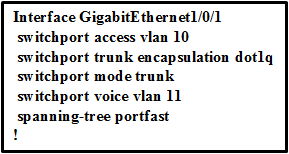
Which option shows the expected result if a show vlan command is issued?
A.
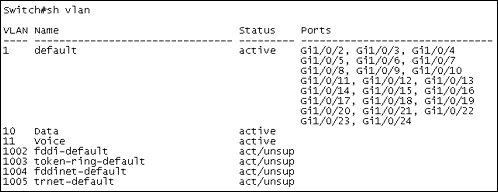
B.
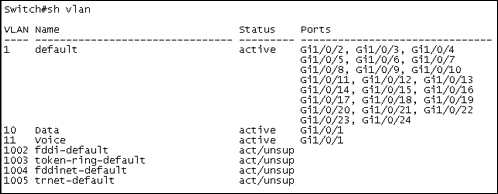
C.
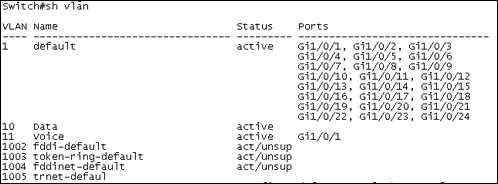
D.
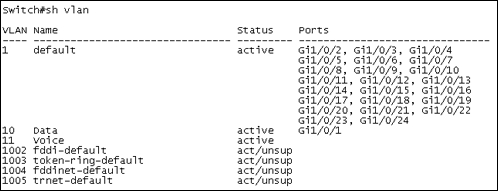
The exhibit shows the configuration for interface GigabitEthernet1/0/1. The configuration includes 'switchport mode trunk,' which indicates that this port is set to operate in trunk mode, managing multiple VLANs. When a port is configured as a trunk, it generally means that the 'switchport access vlan' command is overridden, and the trunk port can carry traffic for all VLANs. However, the 'switchport voice vlan 11' command assigns VLAN 11 for voice traffic. In the context of the 'show vlan' command, trunk ports typically do not show up under a specific VLAN but are considered part of all VLANs specified by the trunk configuration. Based on the configuration and the expected behavior of trunk ports, the output would look like the one in Option A, where VLAN 10 (Data) and VLAN 11 (Voice) are active, but interface Gig1/0/1 does not appear under any specific VLAN in the list, matching VLAN 1 (default) along with its other interfaces.
Which VLAN range is eligible to be pruned when a network engineer enables VTP pruning on a switch?
VTP pruning can be applied to VLANs to prevent unnecessary traffic from being sent to trunk links that do not require it. The VLAN range eligible for pruning is VLANs 2-1001. VLAN 1 is the default administrative VLAN and cannot be pruned. VLANs 1002-1005 are reserved for legacy purposes and also cannot be pruned. Extended-range VLANs, which are VLAN IDs greater than 1005, are not eligible for pruning either. Thus, the correct range that can be pruned is VLANs 2-1001.